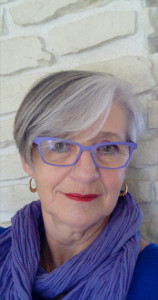
Corpet says fuck you

Which way will you hang this painting?
If this question does not arise with the Mona Lisa or the Lacemaker, it does arise with the series of "Analogue Pondos" painted by Vincent Corpet in the late 1980s. You can turn them around and around as you like. Everything continues to make sense. Even the people in them. They are represented without the slightest perspective, like a "Bertillo identity card", as Philipe Ducat, the author of this month's Art Press article on Corpet, nicely puts it. Our men look at each other both as full-length and recumbent figures.
Bashung as a painter?
We find here the same indeterminacy of meaning as in the lyrics of Alain Bashung's songs. A puddle in the pond of documentary and militant art which seems, by this approach, to sing in mono like the variety artists of the 1960s.
Wrong tools
The journalist notes, as an irrefutable indication of a pure painter's eye, the fact that the artist worked, even in this case, with models posing for him and not on the basis of photographs. Corpet never takes the easy way out. The importance he attaches to the concept of constraint in his work explains even the choice of incongruous or at least unusual tools. Like the Glasochrom pencil used by photoengravers and photographers, for example, with which he executed the 602 drawings of his "120 Days of Sodom" inspired by Sade, the "divine" marquis.
Model portraits
Another surprising tool: the model himself! In the "Analogue Portraits" series, it is each time the person represented on the canvas who decides which motif to associate with his or her own features in Corpet's logic and visual grammar. It was a daring move. Constraint again, constraint always. It is thus anything but obvious to paint recognisable oak, chestnut and chestnut trees in a style that is both post-cubist and fauvist, as Vincent Corpet did in the mid-1980s.
Fuck Maitres!
The same battle is being waged with the "Cellules-souches" series. The title of Taïeb and Laguzet's documentary devoted to its production unambiguously announces its programme: Fuck Maitres! The idea here is neither more nor less than to reinterpret well-known paintings by the great masters of pictorial art. Reproduced in black and white in their original format, they are then "corpetized" with large flat tints and via the addition of motifs born of silhouettes, shapes of traces becoming real umbrellas on an operating table. Pure surrealism? Concealed puns? Unexpected associations constitute, along with the fixing of superfluous constraints by the artist himself, the second guideline of Vincent Corpet's artistic work.
Metaphors and metonymies
It should be noted in this connection that these formal resemblances and material contingencies are nothing if not other names for metaphors and metonymies respectively. In other words, the two major figures of thought. Right brain and left brain at the same time, the painter thus simultaneously addresses the eye and the mind in an endless back-and-forth, finding in his Byzantine sophistication generating indeterminacies an inexhaustible source of jubilation.
Never entrust a brush to a gifted dunce. It would result in futuristic parietal art.
Illustration : Vincent Corpet - Diptych - 1989 -97





































































